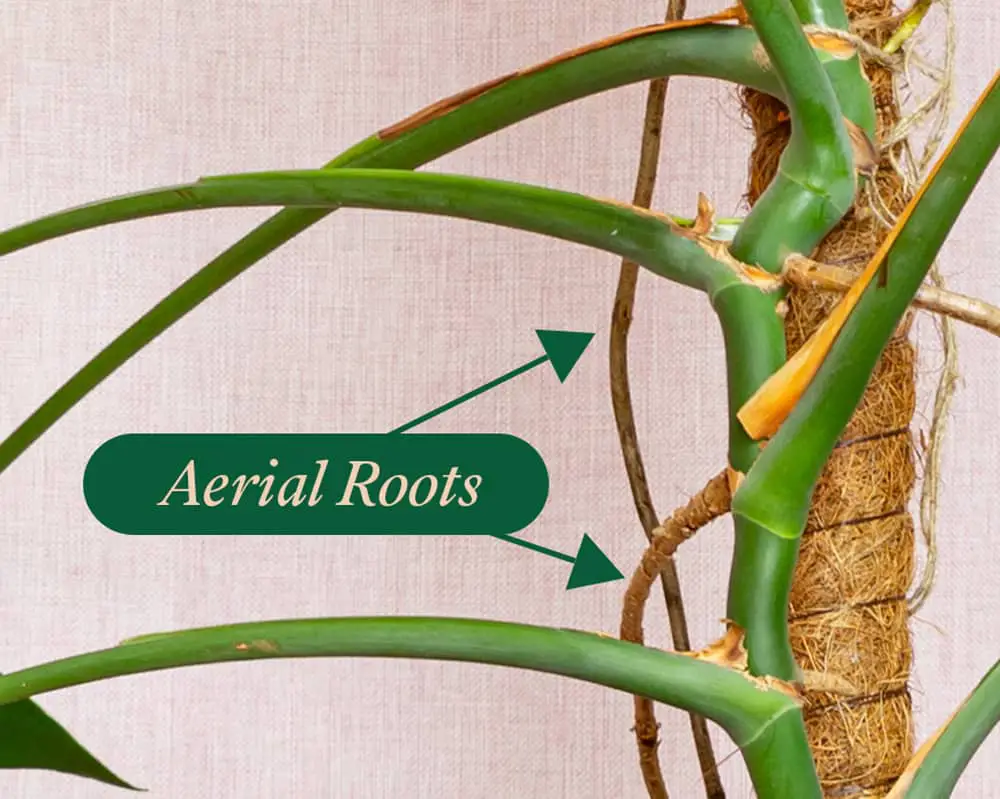

So, the feeder roots will be what conducts water. Why? Because as Monstera grows into the mature stage, they become epiphyte, i.e., break the stem that links them to the ground. And the branches they grow are lateral roots.įeeder roots’ primary role is transporting water and nutrient from the soil, and they are the main water-conducting organ, not the stems? They are often known as aerial-subterranean roots when they grow into the ground.

Upon reaching the ground and penetrating the soil, they will copiously branch. Sometimes, they can get gro as long as 65 to 98 feet (20 to 30 meters) before going to the surface. They may hang on the air or grow into a substrate if any is available.įeeder roots don’t branch until they reach the ground. They arise only from the node on the opposite side of the leaf and are positively geotropic, i.e., they point downwards towards the ground). This dimorphism happens when stems are at least 9/32 to 25/64 inches (7 to 10mm) thick and one meter from the ground surface. When the plant gets a place to climb, the adventitious roots show dimorphism (have different forms), i.e., the feeder or anchor. Their primary role is anchoring to the ground and absorbing water and other nutrients. In the wild, after germination, Monstera will have a short-lived and limited radical root system that will grow up to several inches and the adventitious ones.Īt this seedling or baby stage, adventitious roots will only grow on nodes and maybe 3/64 inches thick and will hardly go beyond 8 inches in length. You can propagate these plants by clipping off a piece of the stem just below an aerial root and potting it up.Monstera aerial roots: © Motoya Kawasaki Growth and function The stiff roots act as guy wires, supporting the weak stems in place. They produce aerial roots that grow downward until they reach the soil.

In their natural habitat, windowleaf vines climb trees, reaching high into the rainforest canopy. Windowleaf plants are houseplants that make unique use of aerial roots. You can propagate the plant by snipping off the plantlets and planting them with their roots under the soil. Often grown in hanging baskets, spider plants produce plantlets that dangle from specialized, wiry stems that arch outward from the plant. You’ll find one of the most familiar examples of this on spider plants. Can I Plant Aerial Roots?Īerial roots on houseplants provide good examples of roots that you can plant. In some cases, however, they are essential to the plant’s health and best left alone. In many cases, aerial roots can be removed without harm to the plant. They help with air exchange, propagation, stability, and nourishment. Why Does My Plant Have Roots Coming Off the Sides?Īerial roots perform a number of functions. These plants produce above ground “breathing roots” to help them with air exchange. Plants that live in marshes and bogs have underground roots but they can’t absorb gasses from the air. Some types of aerial roots also absorb moisture and nutrients, just like underground roots. Aerial roots on woody vines function as anchors, affixing the plant to supporting structures such as trellises, rocks, and walls. What are Aerial Roots?Īerial roots are roots that grow on the above-ground parts of a plant. So you’re likely asking, “What are aerial roots?” and “Can I plant aerial roots to make new plants?” For answers to these questions, keep reading to learn more about plants with aerial roots. When it comes to plant roots, there are all sorts and one of the more common includes aerial roots on houseplants.


 0 kommentar(er)
0 kommentar(er)
